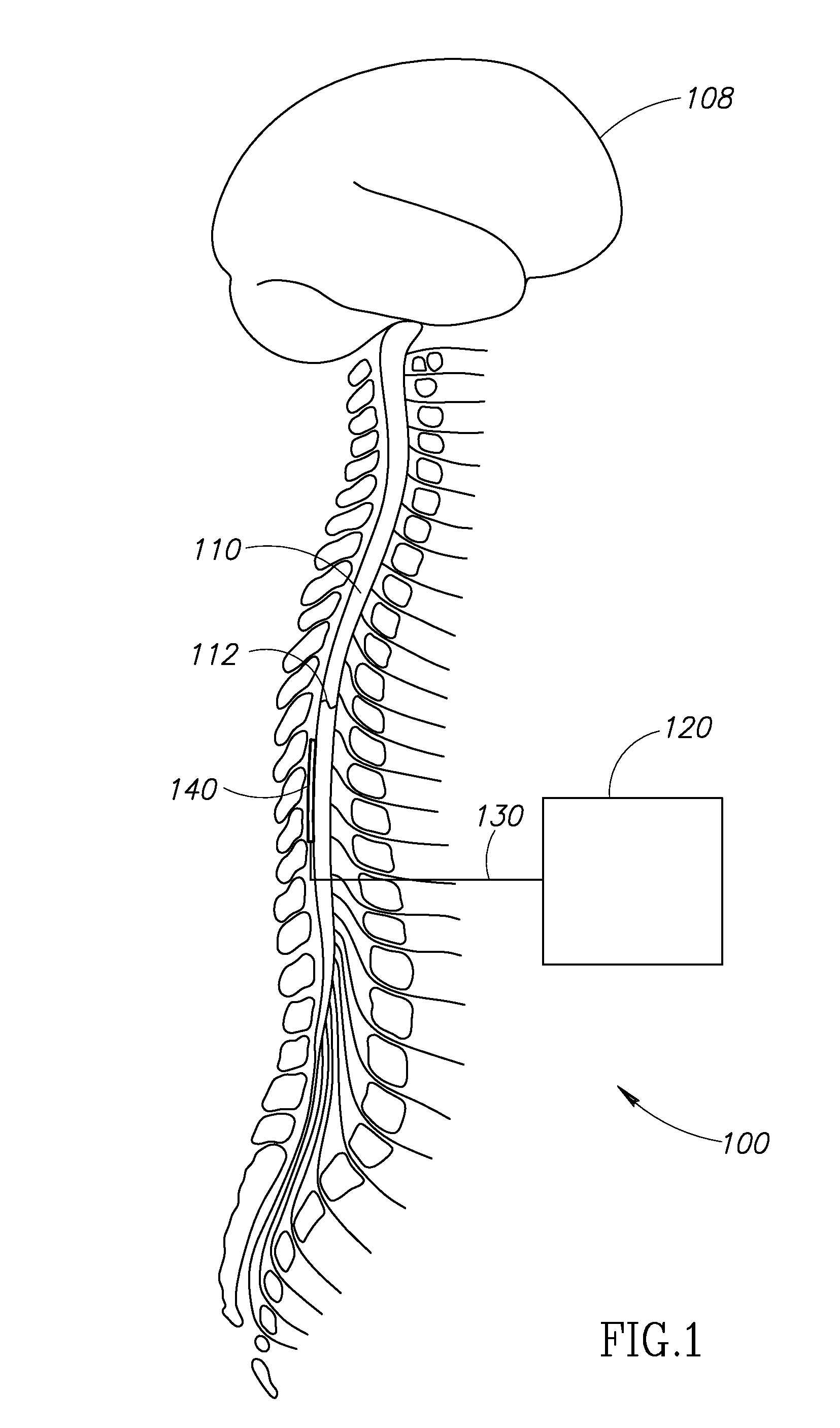Spinal stimulator systems for restoration of function
a stimulator and spinal cord technology, applied in the field of spinal cord stimulator systems for restoring function, can solve the problems of limited attempts to restore function in neurologically impaired subjects, little progress in realizing the restoration of normal function of damaged nerve tissue, and no permanent remodeling of the nervous system
- Summary
- Abstract
- Description
- Claims
- Application Information
AI Technical Summary
Benefits of technology
Problems solved by technology
Method used
Image
Examples
first embodiment
[0106]FIG. 5 is a block diagram of a first embodiment of a system 200. The system 200 includes an implantable assembly 202 substantially similar to the assembly 100 described above, and an external system 204 substantially similar to the external system 180 described above. Therefore, only components of the assembly 202 that differ from those of the assembly 100, and components of the external system 204 that differ from those of the external system 180 will be described in detail. For ease of illustration, like reference numerals have been used to identify like components in FIGS. 1-3 and 5.
[0107]The assembly 202 includes a neurostimulator device 220, the one or more leads 130, and the electrode array 140, and the connections 194. The assembly 202 may also include the reference wires 196 (see FIG. 2). By way of a non-limiting example, the assembly 202 may include the two reference wires illustrated in FIG. 2. In the embodiment illustrated, the connections 194 include sixteen wires,...
second embodiment
[0151]FIG. 10 is a block diagram of an implantable assembly 300. For ease of illustration, like reference numerals have been used to identify like components in FIGS. 1-3, 5, and 10. The assembly 300 may be configured to communicate with the external controller 270 via the communication connection 155A. Optionally, the assembly 300 may receive power wirelessly from the external wireless power circuit 280 via inductive coupling over the power transfer connection 155B.
[0152]In addition to providing complex stimulation patterns to body tissue (e.g., neurological tissue), the assembly 300 is configured to also provide electrical stimulation directly to muscles (not shown) that will cause the muscle to move (e.g., contract) to thereby augment the improved neurological function provided by the complex stimulation patterns alone. The assembly 300 is configured to provide one or more complex stimulation patterns to 16 or more individually addressable electrodes for purposes of providing imp...
third embodiment
[0169]FIG. 11 is a block diagram of a first embodiment of a system 400. The system 400 includes an implantable assembly 402 substantially similar to the assembly 100 described above, and an external system 404 substantially similar to the external system 180 described above. Therefore, only components of the assembly 402 that differ from those of the assembly 100, and components of the external system 404 that differ from those of the external system 180 will be described in detail. For ease of illustration, like reference numerals have been used to identify like components in FIGS. 1-3, 5, and 10-12B.
[0170]The assembly 402 includes a neurostimulator device 420, the electrode array 140, and the one or more traces 130. The neurostimulator device 420 is connected by a controller interface bus 437 to an implantable muscle stimulator package 438, and an EMG module 446. The neurostimulator device 420 is configured to interface with and control both the implantable muscle stimulator packa...
PUM
 Login to View More
Login to View More Abstract
Description
Claims
Application Information
 Login to View More
Login to View More - R&D
- Intellectual Property
- Life Sciences
- Materials
- Tech Scout
- Unparalleled Data Quality
- Higher Quality Content
- 60% Fewer Hallucinations
Browse by: Latest US Patents, China's latest patents, Technical Efficacy Thesaurus, Application Domain, Technology Topic, Popular Technical Reports.
© 2025 PatSnap. All rights reserved.Legal|Privacy policy|Modern Slavery Act Transparency Statement|Sitemap|About US| Contact US: help@patsnap.com



